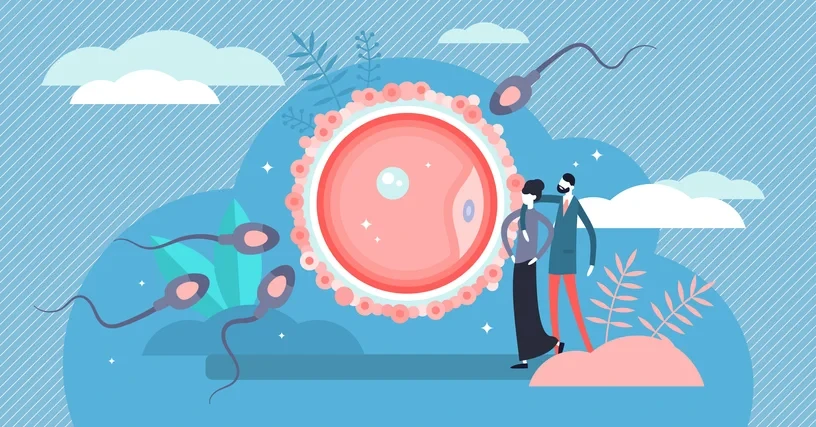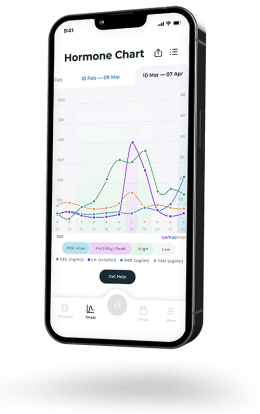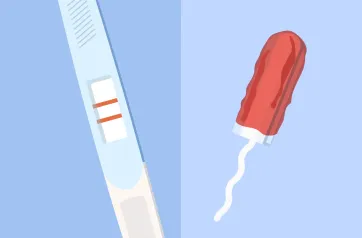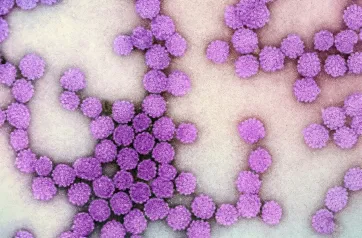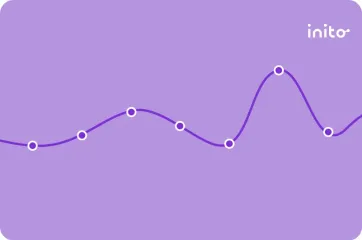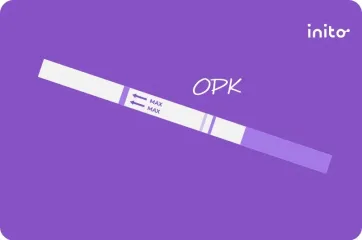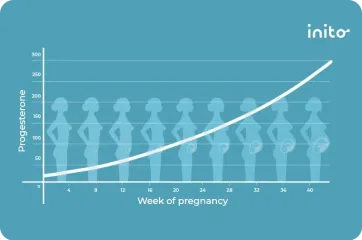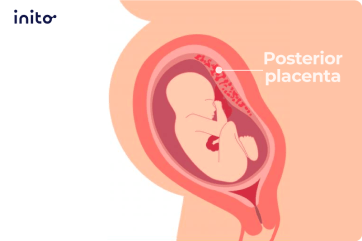Content table
Defeated. Sad. Anxious.
These are just a few of the many emotions you may feel after seeing yet another negative pregnancy test result.
Finding out you’re not expecting can be discouraging. However, don’t give up on growing your family, though!
Knowing how to track your menstrual cycle and determining your fertile windows can help you increase the odds of getting pregnant. if you’re confused about how to do this or wondering if you’re doing it correctly, keep reading.
We’re here to clear up some common questions regarding when you are most fertile and how your menstrual and ovulation cycles work.
Key Takeaways
- Pregnancy can only occur for a certain window during the menstrual cycle.
- The average menstrual cycle is 28 days, but regular cycles anywhere from 21 to 45 days are considered normal.
- Ovulation typically occurs 12 to 14 days before your next period. However, the timing of individual ovulation cycles can vary.
- Tracking your ovulation is crucial for determining when you are most fertile.
- You can increase your chances of becoming pregnant by having sex when you are most fertile.
- Chances of getting pregnant are highest 5 days before ovulation and one day after.
- You can gauge ovulation by cervical mucus, BBT, pelvic ultrasound exams, and ovulation predictor kits.
- You can increase your chances of getting pregnant by living a healthy lifestyle, tracking your cycles, getting a physical/blood work, and using ovulation predictor kits.
- Based on your FSH, Estrogen, LH, and PdG levels, Inito can tell you when you have “high fertility,” “peak fertility,” and “ovulation confirmed.”
How Menstrual Cycles work?
The menstrual cycle is a series of hormonal and physical changes that make pregnancy possible.
When the menstrual cycle begins, the egg is in a fluid-filled sac (called a follicle) within the ovaries.
At the start of the menstrual cycle, several of these try to grow under the influence of the Follicle-Stimulating Hormone (FSH). For most women, only one continues to mature and form the dominant follicle. This follicle produces estrogen to prepare for ovulation, the release of the egg
After this follicle matures, the Luteinizing Hormone (LH) surges. This causes the follicle to rupture, releasing the egg. Once the egg is released, it moves slowly toward the uterus through the fallopian tube. Here, the egg can live for 24 hours.
So, if you’re hoping to become pregnant, the egg must come in contact with the sperm during this time.
Meanwhile, the progesterone levels in your body increase to create the appropriate environment for a fertilized egg.
If the egg is not fertilized, the progesterone levels drop, causing the start of your period. This is marked by vaginal bleeding.
The “Average” Menstrual Cycle Length
Knowing the events in a menstrual cycle may leave you wondering how frequently one occurs.
The “average” is to have a period every 28 days.
However, regular cycles that are longer or shorter than this (21 to 45 days) are still deemed normal.
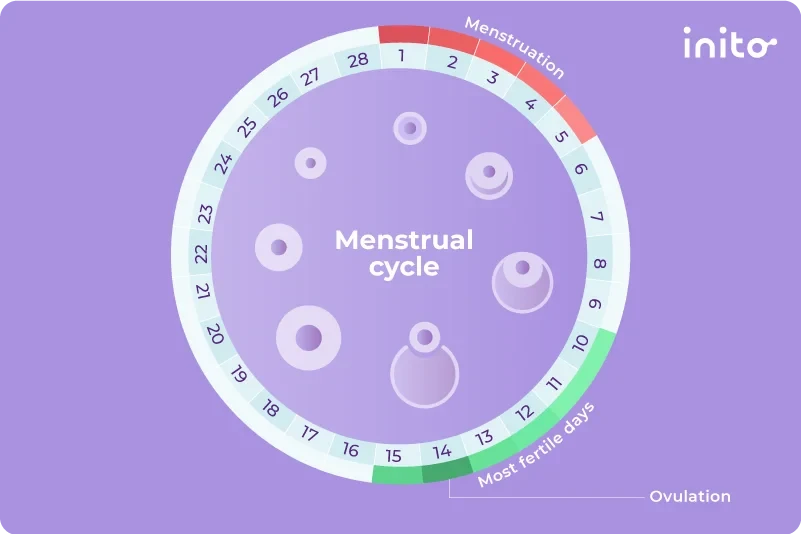
This means that if you had a period on July 1, it would be considered average to have another period around July 28 or 29.
It would also be normal to experience one as early as July 22 or as late as August 14, depending on your typical menstrual patterns.
But why are there differences in cycle length?
Well, eggs differ in the amount of time they take to mature and release in each body.
Fertile Days in Your Menstrual Cycle
Sperm can survive in the female body for up to 5 days. Additionally, an egg has 24 hours to meet a sperm after it ovulates.
As a result, it is possible to get pregnant for 5 days before you ovulate and one day after. This 6-day window in the menstrual cycle is when you are most fertile.
Ovulation typically occurs 14 days before your next period. So:
- If you have a 24-day cycle: your egg will be released on day 10. In this case, the fertile window would be from day 5 to day 11.
- If you have a 40-day cycle: ovulation should occur around day 26. This would make the fertile window days 21 to 27.
Mapping your exact fertile window will help you time your intercourse to maximize the chances of getting pregnant.
However, remember that while ovulation occurs during most menstrual cycles, it’s normal to have a few anovulation cycles each year. (During an anovulatory cycle, an egg doesn’t mature, so fertilization can’t happen.)
Anovulation cycles can be caused by:
- hormonal imbalance,
- chronic stress,
- weight fluctuations,
- intense exercise,
- or an underlying disease.
While occasional anovulatory cycles are normal, experiencing them chronically can prevent pregnancy.
Periods and Fertility
One common misconception is that women are most fertile the week before their period.
You’re actually most fertile at the time of ovulation, which typically occurs 12 to 14 days before your next period starts.
Because menstrual cycle and ovulation schedules can vary, you’ll want to track your ovulation and not just your period if you’re trying to determine when you are most fertile.
Determining when (and if) you’re ovulating
Up to 47% of cycles can vary by up to 7 days, so it can be tricky to determine when you are most fertile.
Here are some ways to help you determine when you are ovulating. However, since not all of these options are created equal, it’s essential to consider the benefits and drawbacks of each:
Monitoring cervical mucus
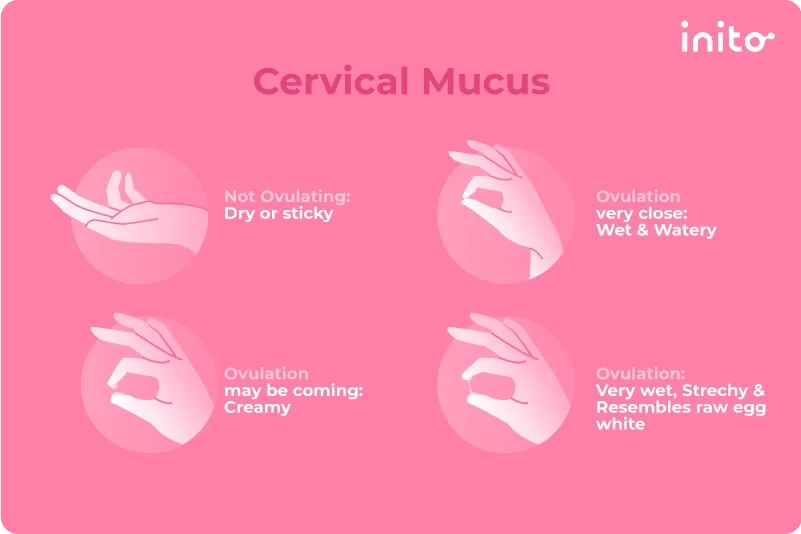
Changes in cervical mucus can be a sign of ovulation. Generally, cervical fluid is very light after the period. As your body moves towards ovulation, the cervical mucus becomes plentiful and stretchy like an egg white.
If you use your fingers to gather some from the vaginal canal and stretch two fingers apart, the mucus can stretch up to a few inches when you are nearing ovulation.
However, this can be a subjective assessment. Also, you may not experience this ovulation sign every month.
Learn more: Checking your Cervix for Ovulation: A Simple Guide
Measuring basal body temperature (BBT)
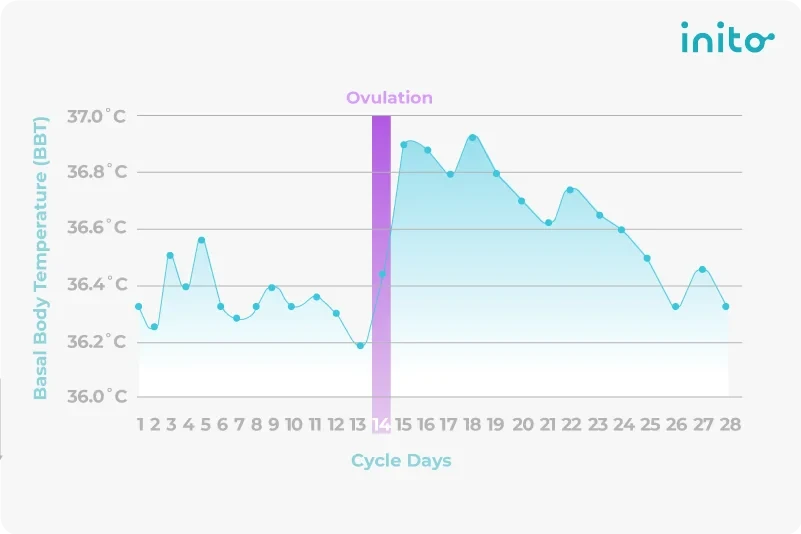
Checking your body temperature as soon as you wake up and while you are still in bed can help you predict when you are ovulating.
A day after ovulation, the BBT rises, and it continues to rise until you get your period. This rise in the temperature is slight (about 0.5 to one degree Fahrenheit).
While this is less subjective than changes in cervical mucus, you may miss your fertile window since the rise occurs only after you have ovulated.
Taking a pelvic ultrasound exam
The most accurate way to detect ovulation is to take a pelvic ultrasound. During this procedure, a medical specialist tracks the follicle growth over multiple ultrasounds to predict the ovulation day.
The scan also indicates whether the inner lining of the uterus, known as the endometrium, is sufficiently thick for a fertilized egg to adhere to.
While pelvic ultrasound exams can offer a lot of information, the procedure requires multiple doctor visits, which can be inconvenient and costly.
Ovulation predictor kits (OPKs)
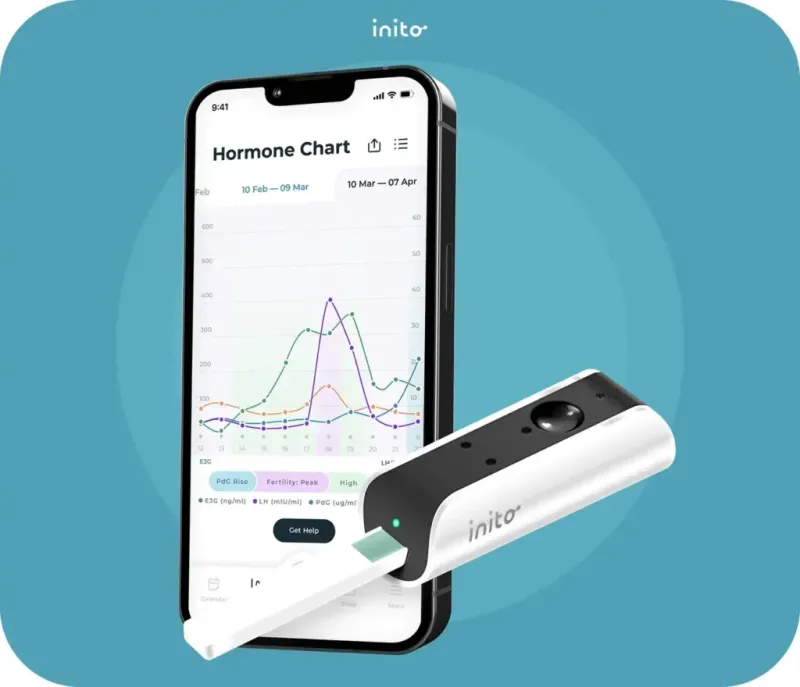
There are a variety of ovulation testing kits you can purchase at your local drug store for home use. These kits contain testing strips that help you identify when your estrogen rises and you have an LH surge.
Unfortunately, these tests don’t show whether you have actually ovulated. You may be experiencing anovulation cycles and not be aware.
The only way to know if you’ve ovulated is via an ultrasound exam or a progesterone test (called the PdG test).
The Inito Fertility Monitor is the only at-home testing option that tracks your FSH, estrogen, LH, and PdG (urine metabolite of progesterone) levels on a single test strip and tells if you’re ovulating accurately.
Learn more about Inito: Mastering your hormones with Inito: A step-by-step guide
Maximizing Fertility and Increasing Your Chance of Conception
There are many things you can do to increase your chances of a positive pregnancy test. Here are a few:
Make healthy lifestyle choices:
A healthy lifestyle can increase your chances of becoming pregnant. Working with your doctor and other health professionals to achieve a balanced diet and doing the right amount of exercise can help with your pregnancy.
Monitor the exact dates of a few cycles:
Tracking your menstrual cycle can help you better understand its timing. If you notice a frequently irregular cycle, consult your doctor or a fertility counselor for guidance.
Get a physical and/or some blood work:
Knowing what’s happening with your hormones is essential if you’re trying to conceive.
Millions of women around the world struggle to become pregnant due to irregular menstrual cycles, PCOD, and hormonal issues.
So, if you’ve been trying to become pregnant for months, consult your doctor and get the suggested tests done. This will ensure that there are no physical or hormonal barriers to pregnancy.
Use an ovulation predictor kit to plan sexual intercourse:
Having sexual intercourse when you are ovulating gives you the best chance of conceiving. Using an ovulation predictor kit can make make it easier to know the exact dates you’re ovulating. This way, you won’t miss any potential days in your fertile window.
Using the Inito app for tracking your most fertile days has several benefits:
- The app shows “high fertility” when Estrogen levels have risen. On high fertility days, it’s recommended that you have sex every other day to maximize your chances of pregnancy.
- It shows “peak fertility” when your LH has surged. This means that you can expect to ovulate in the next 24-36 hours and should plan to engage in sexual activity to increase your pregnancy chances.
- Following the LH surge, there should be a rise in PdG (urine metabolite of progesterone) to show that you have actually ovulated. Inito shows “ovulation confirmed” once your PdG has risen steadily after the LH surge. Learn more: High fertility vs. Peak fertility
Learn more: High fertility vs. Peak fertility
One last thing to remember: If you have a cycle when you don’t ovulate, just try again the next month. However, if you have multiple anovulatory cycles, check in with your doctor.
Was this article helpful?
- The American College of Obstetricians and Gynecologists. (2015). Fertility awareness-based methods of family planning.
- Su HW, et al. (2016). Detection of ovulation: A review of currently available methods.
- Periods and fertility in the menstrual cycle.
- Mayo Clinic. Menstrual cycle: what’s normal, what’s not.




